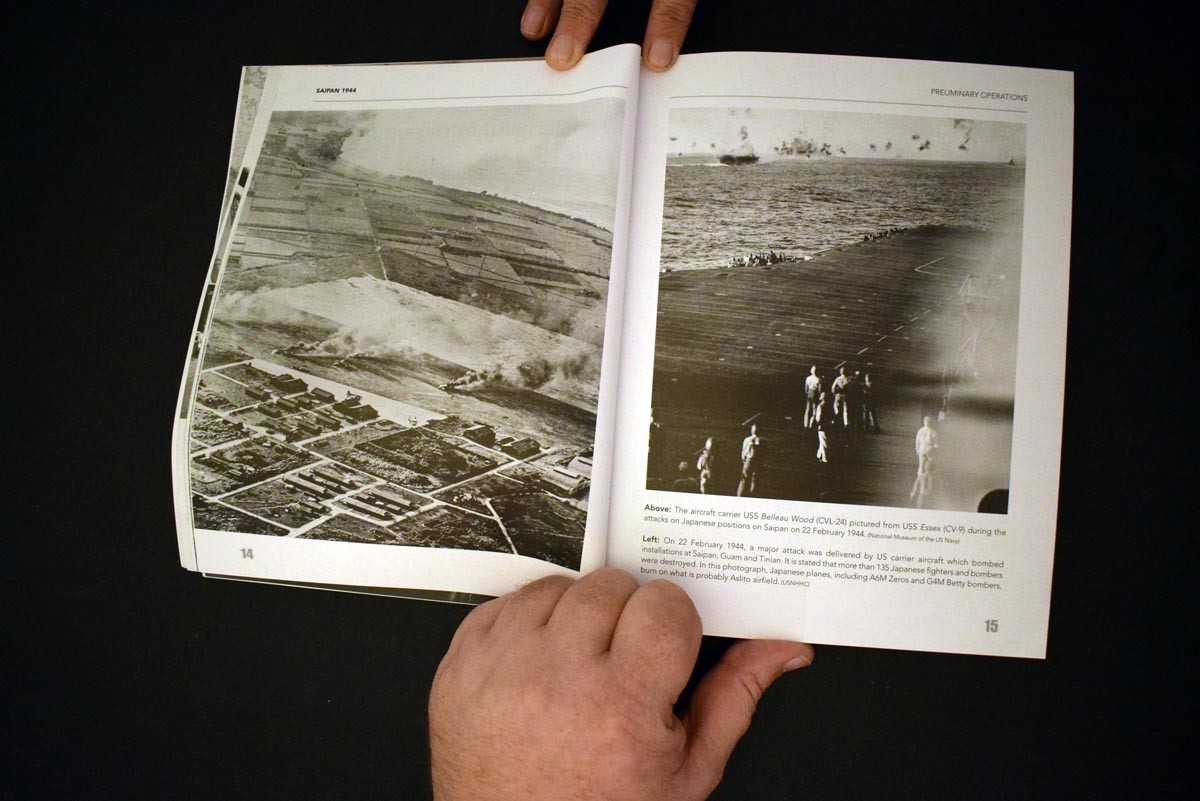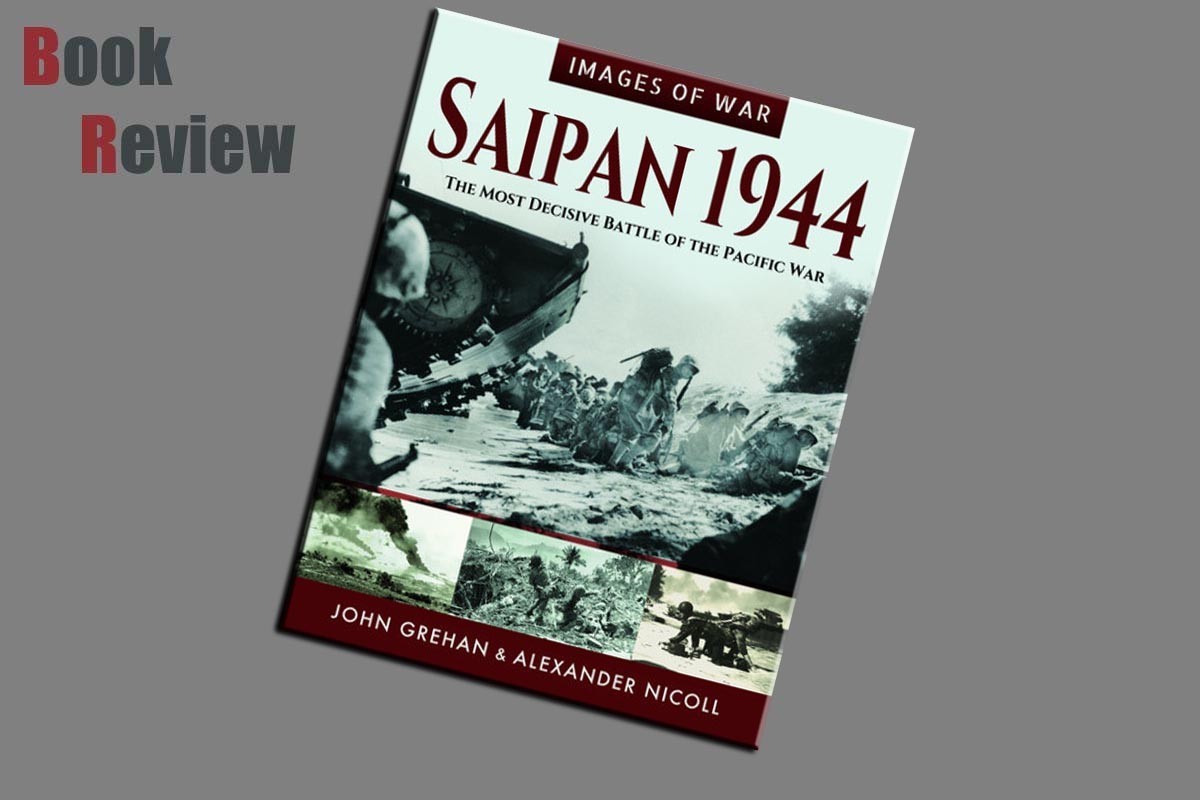
Introduction
The following introduction is taken from the Pen and Sword website:
After the astonishing Japanese successes of 1941 and early 1942, the Allies began to fight back. After victories at Guadalcanal, Coral Sea, Midway and other islands in the Pacific, by 1944, the Japanese had been pushed back onto the defensive. Yet there was no sign of an end to the war, as the Japanese mainland was beyond the reach of land-based heavy bombers. So, in the spring of 1944, the focus of attention turned to the Mariana Islands – Guam, Saipan and Tinian – which were close enough to Tokyo to place the Japanese capital within the operational range of the new Boeing B-29 Superfortress.
The attack upon Saipan, the most heavily-defended of the Marianas, took the Japanese by surprise, but over the course of more than three weeks, the 29,000 Japanese defenders defied the might of 71,000 US Marines and infantry, supported by fifteen battleships and eleven cruisers. The storming of the beaches and the mountainous interior cost the US troops dearly, in what was the most-costly battle to date in the Pacific War.
Eventually, after three weeks of savage fighting, which saw the Japanese who refused to surrender being burned to death in their caves, the enemy commander, Lieutenant General Saito, was left with just 3,000 able-bodied men and he ordered them to deliver a final suicide banzai charge. With the wounded limping behind, along with numbers of civilians, the Japanese overran two US battalions, before the 4,500 men were wiped out. It was the largest banzai attack of the Pacific War.
As well as placing the Americans within striking distance of Tokyo, the capture of Saipan also opened the way for General MacArthur to mount his invasion of the Philippines and resulted in the resignation of the Japanese Prime Minister Tojo. One Japanese admiral admitted that ‘Our war was lost with the loss of Saipan’. This is a highly illustrated story of what US General Holland Smith called ‘the decisive battle of the Pacific offensive’. It was, he added, the offensive that ‘opened the way to the Japanese home islands’.
Review
This offering from Pan and Sword as part of the Images of War series, turns its attention to Saipan 1944, noted as the most decisive battle of the Pacific War. This images of War title is authored by George Grehan and Alexander Nicholl. The book itself is a soft backed book, with a card cover protecting 192 pages of semi-gloss paper. The contents of this offering are presented as follows:
Acknowledgements
Introduction: Operation Forager
Chapter 1 The Plan of Attack
Chapter 2 Preliminary Operations
Chapter 3 D-Day: 15th June 1944
Chapter 4 Into the Mountains
Chapter 5 Battle of the Phillippine Sea, 19-20 June 1944
Chapter 6 Banzai! - The Last Battle, 7 July 1944
Chapter 7 Suicide Cliff
Chapter 8 ‘Hell is on us’
Reference and Notes
Select Bibliography
This offering in the Images of War series, has been authored in a more conventional book style with the text provided by the authors intermingled with the photographic content. Again a chapter an verse type of book is not the intention of the series, and so the written content is limited in that respect. It does however, provide you with pertinent information on the intent of the battle and the faces of some of the leaders behind it. The text is all in English and as usual for the series well written.
The American capture of Saipan was the bloodiest of the war, up to that point. The taking of Saipan, pitched 71,000 American troops against 29,000 Japanese with the butchers bill of just 3,500 Americans killed and just under 10,500 wounded. Of all the civilians and Japanese on the islands only around 1,500 surrendered.
Being an Images of War title, you will of course most likely purchase this book, for its photographic content, and you will not be disappointed in that respect. The photographs in this title cover air and sea power, in addition to seeing the humble foot soldier and grunt in the field. A good mix or action and non-action shots are included. All of the images are provided in black and white, which is a little bit of a surprise, as the Americans used huge amount of coloured film, none of which has been provided here. Images of death and destruction are present in the title, but have been tastefully selected as relatives could still be alive. On a lighter note, I quite liked the image on page 87, which shows a Marine 1st Sergeant sharing his food with a rare survivor of a Naval air bombardment, in this case feeding bananas to a goat. All of the images in the book, are provided with well written captions which add facts to the visual interest.
Conclusion
This offering from Pen and Sword, provides a tasteful view of the taking of Saipan in 1944. With this battle being against the Japanese, it is hard to avoid covering the brutality of war, especially when you consider that 3,500 Japanese soldiers were committed to the largest Banzai attack ever, and behind these 3,500 followed up the walking wounded. With the images covering various aspects of warfare, it makes this offering particularly visually interesting due to its scope.





























